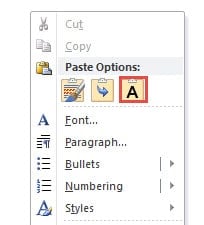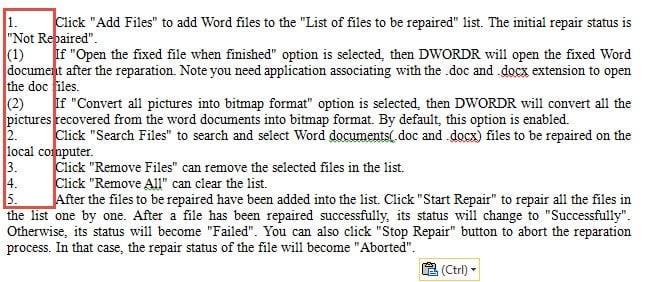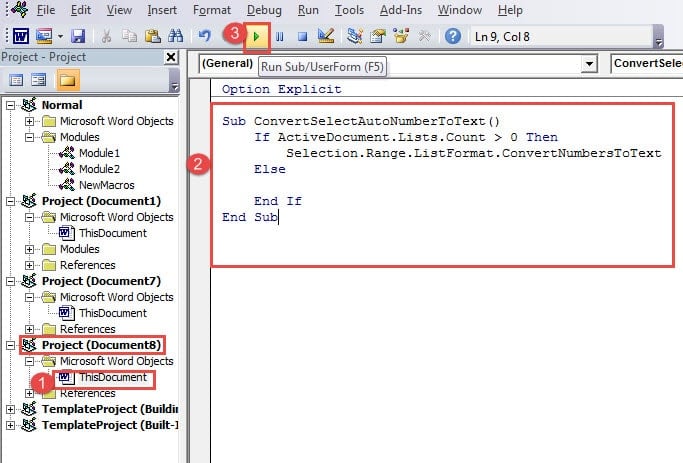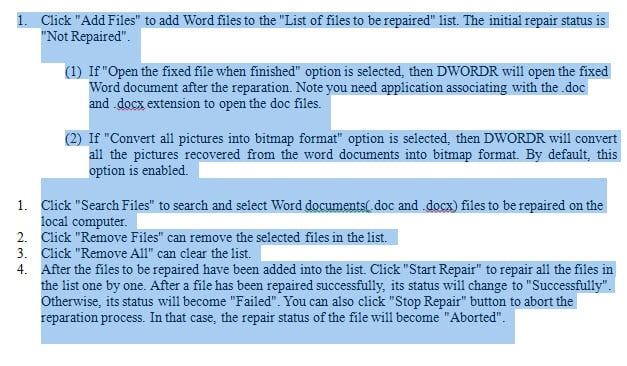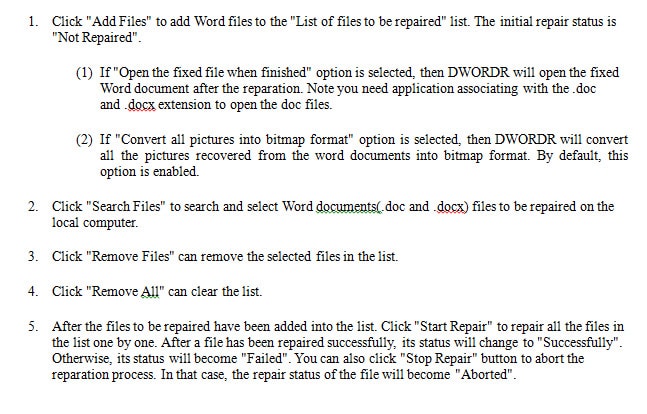In this article, we intend to show you 2 ways to convert automatic numbering to normal texts in your Word document.
Generally, we benefit a lot from the AutoNumber feature in Word. It saves us much trouble in listing items and organizing paragraphs. However, here is the twist. A document normally requires revisions more than once. And it’s in the process of adding and deleting texts that the numbers get affected. Therefore, we need to convert these “dynamic” numbers to plain texts. So we can protect our document formatting.
Following are our 2 methods you will need. And before you trying out, we highly recommend you take a backup of your file first. In case you have to auto number a text after converting it to normal text, you can always have a backup to resort.
Method 1: Keep Text Only
- First and foremost, select the text which contains automatic numbering.
- Then right click.
- Next choose “Copy” on the list-menu.
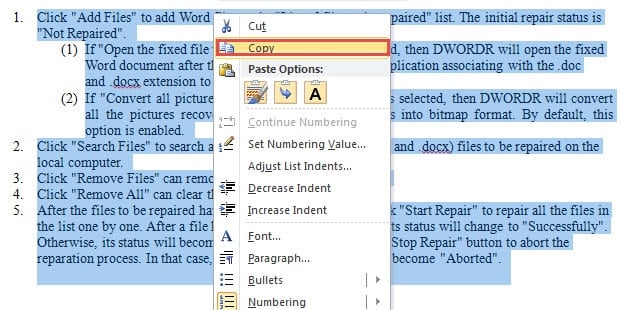
- Now press “Delete” to remove the original text.
- And right click on the area again.
- This time choose “Keep Text Only” under “Paste Options”.
Now you have successfully converted automatic numbering to static ones.Below is an example:
You may already notice that the document formatting actually changes a bit. If your document contains only a few numbers and it requires no formatting standards, you can safely employ this method. However, if your document has multilevel lists, you will have to repeat these operations several times.
As a matter of fact, this is why we have second method, i.e. using VBA codes.
Method 2: Use VBA Codes
- Firstly, make sure you have “Developer” tab available in the Ribbon. If not , please refer to our previous article: How to Insert Background Music into Your Word Document
- Secondly, click “Developer” tab.
- Thirdly, click “Visual Basic” in “Code” group.
- Now you have opened the VBA editor. On the left side column, find the project of your document name. Then double click “ThisDocument” to open the editing area on the right side.
- Now, let’s look at 2 different cases. Firstly, if you want to convert only a selection of automatic numbering, you should copy and paste the following codes:
Sub ConvertSelectAutoNumberToText() If ActiveDocument.Lists.Count > 0 Then Selection.Range.ListFormat.ConvertNumbersToText Else End If End Sub
However, if you have nailed the final draft of the whole document, you should take the following ones to convert all automatic numbering to plain texts:
Sub ConvertAllAutoNumberToText() If ActiveDocument.Lists.Count > 0 Then Dim lisAutoNumList As List For Each lisAutoNumList In ActiveDocument.Lists lisAutoNumlist.ConvertNumbersToText Next Else End If End Sub
- Lastly, click “Run” to get the job done.
You can see when you use VBA codes to get rid of the “dynamic” numbers, you can preserve the document formatting very well.
Give Thought to Backups
Like always, we put a lot emphasis on taking backups for your files. Since they play a vital role when your files get corrupted, the time you spend on it can pay back. One of the examples is, when using a docx error repair tool, you can always have the latest data to refer which can cut you downtime significantly.
Author Introduction:
Vera Chen is a data recovery expert in DataNumen, Inc., which is the world leader in data recovery technologies, including xlsx data error repair and pdf repair software products. For more information visit www.datanumen.com
